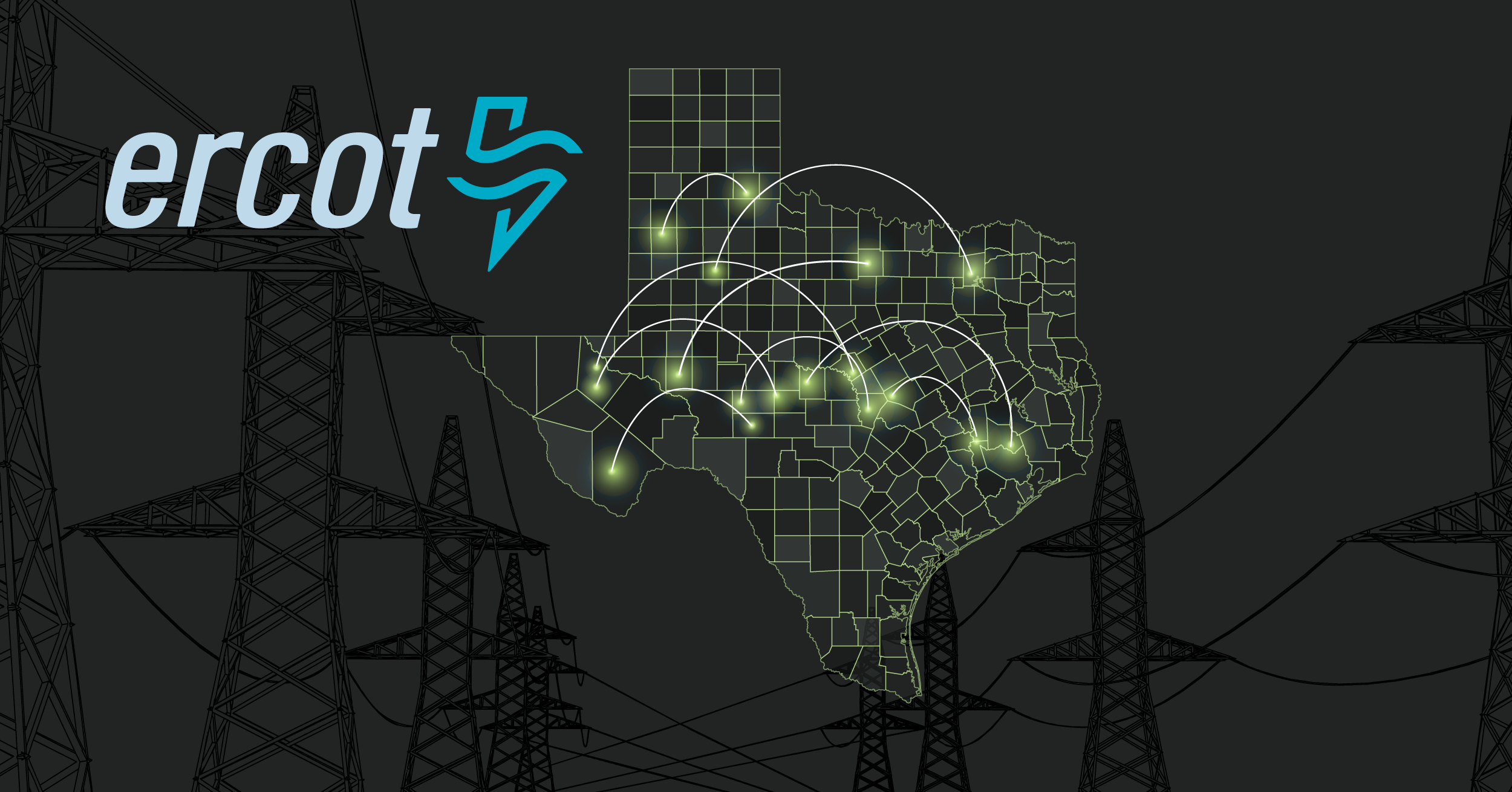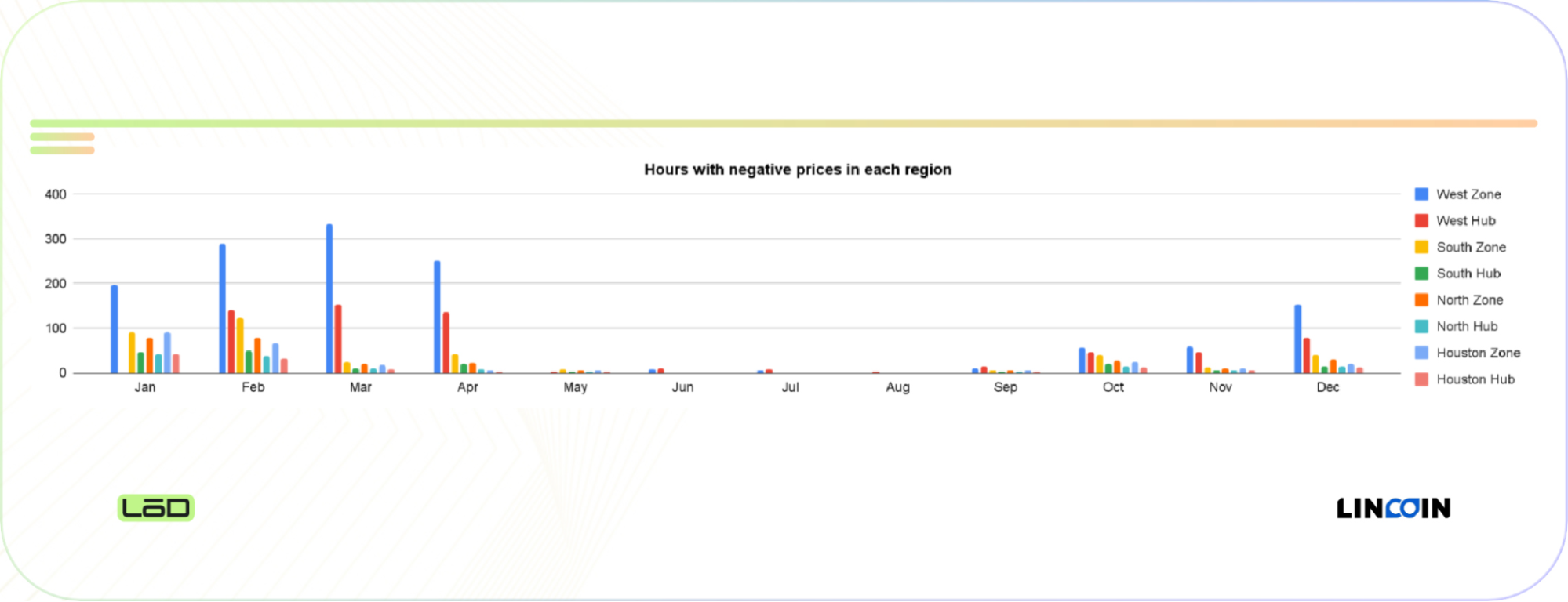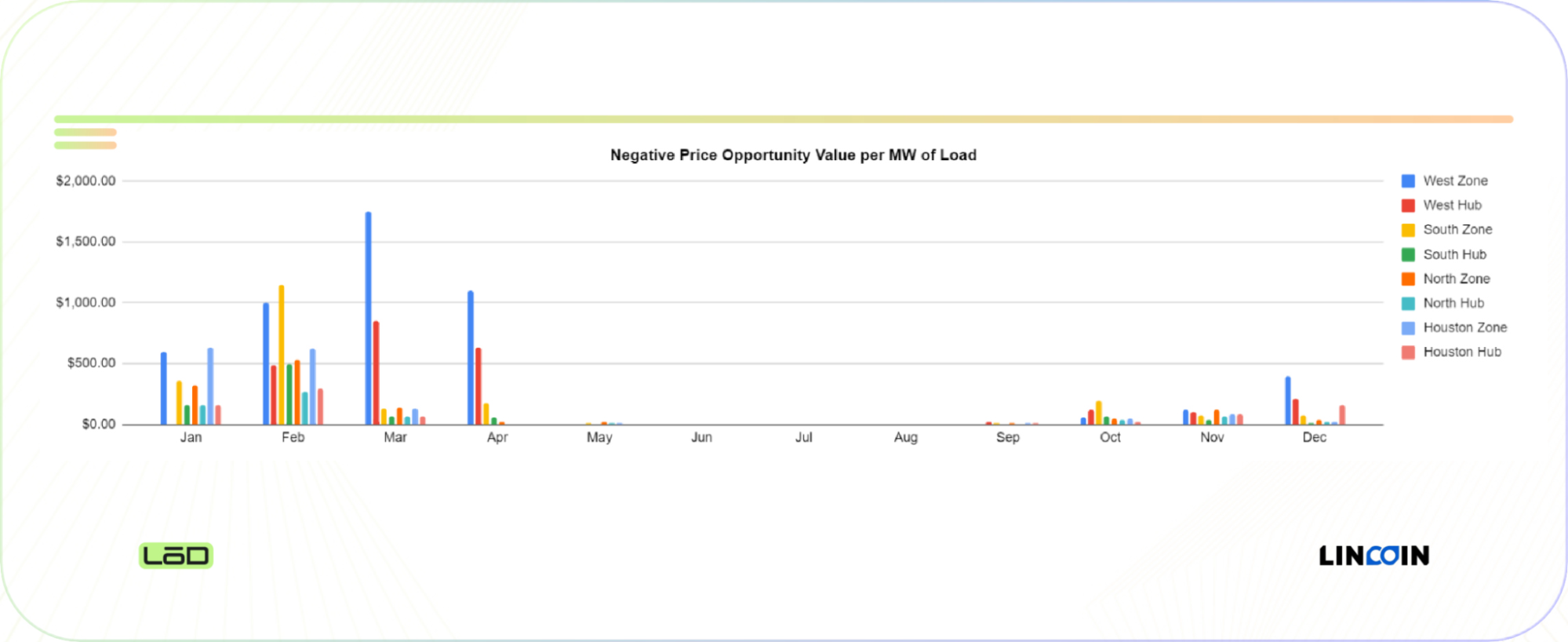October 6, 2025
3 mins read
mins read

“Load zone” refers to a specific geographic area within the ERCOT region where electricity demand is priced and evaluated. Before electricity is served to demand, it is sourced from generators across the region into hubs. There are seven major hubs and 8 load zones across ERCOT, with significant ones in the West, South, North, and Houston regions. Electricity management, measurement, and valuation occur within these hubs and zones. The West Load Zone covers a vast area in western Texas, traditionally known for oil and gas resources, it is now known for its abundant renewable energy resources, such as wind and solar.
One specific characteristic of West Texas is the “Competitive Renewable Energy Zones” (CREZ) initiative which has significantly bolstered the state’s wind energy capacity by developing extensive transmission loops. These loops are crucial for transporting wind-generated electricity from remote areas in the west, to major consumption hubs close to Dallas and Austin. However, the transmission build-out is still not adequate and there are still huge gaps between generations in the West area and the amount transmitted to major consumption regions. Therefore, congestion remains a critical issue in West Texas which often results in curtailment of renewable energy assets. The current transmission capacity can only transfer 40% of generated energy to consumption hubs and the rest shall be consumed locally in the West Zone.
In 2023, the West Load Zone experienced numerous instances of negative electricity prices. Negative prices occur when electricity supply exceeds demand or transmission capacity, leading to a surplus. During these times, grid operators pay consumers to use electricity in order to incentivize balancing the grid. In 2023, the lowest price in the West Load Zone was recorded to be as low as $ -244.4 per megawatt-hour (MWh), very close to ERCOT price floor of – 251 $/MWh.
In 2023, we saw volatility across all ERCOT Load Zones. However, the West Load Zone experienced the most occurrences of negative prices, thus creating the most opportunity for flexible loads and flexible data centers. Reports indicate that up to 19 days per month saw negative price events and over 1000 occurrences of negative prices in a given month. Refer to the chart below for the volume and value of negative prices in 2023.


For flexible data centers, negative prices present a unique opportunity to lower their average energy expenditure. The estimated capturable value from negative prices in the West Zone amounts to approximately $5000 per MW of load annually. To maximize these benefits, data centers must ensure the optimal operation of servers and ASICs. This means proactively managing the energy usage, clock speed and workloads based on real-time and forecast grid conditions.
The ERCOT Load Zone offers both challenges and opportunities for data centers seeking to enhance profitability through optimized energy consumption. With frequent occurrences of negative prices and our tailored solutions, data centers can effectively monetize energy consumption and contribute to grid stability initiatives.
Remember, in ERCOT Load Zone, negative prices aren’t just an anomaly—they’re an opportunity waiting to be captured!
At LŌD, we specialize in empowering data centers to streamline and optimize their operations with our sophisticated yet easy-to-use energy strategy platform. By leveraging our solutions, data centers can streamline device and server monitoring and management. Additionally, deploying our energy strategy automation enables data centers to effectively capitalize on negative price events, manage clock speed and schedule workloads to manage their energy costs.
How can we help:



What to Do Next?
Book an Energy Strategy Call
.svg)